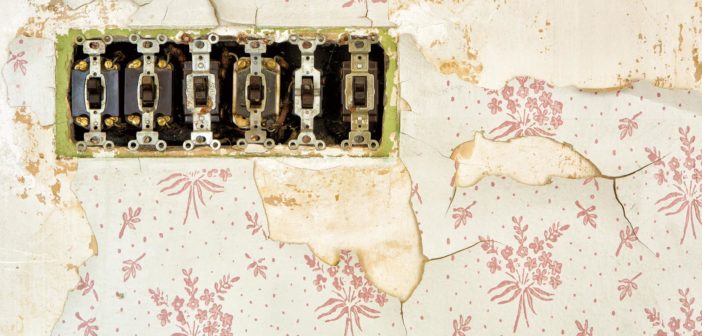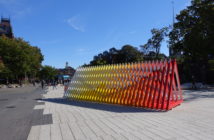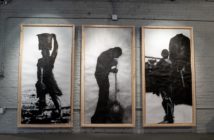Nearly sunset, and time on the water
of 1984. Language its tracer.
No image like the image of language.
I had waded out about thigh deep.
Then a shout from the beach.
I held in my hand half a coconut shell
of coconut milk and 150-proof rum
and dumped it white into the waves
when it came on me how sweet it had been,
then the idea I was not finished,
then the act of reaching down
with the idea I would get it back.
Having read Rodney Jones’s poem Hubris at Zunzal a couple days before coming to Fountain Street Fine Art Gallery’s Transient exhibition, the poem was a ready lens through which to guide my understanding of the gallery’s core artist show. Although both artists render an interpretation of transience with different approaches and different intentions, the image of coconut milk dissipating through the waters of Marley’s and Skinner’s pieces well balance the conflicting feelings of order and chaos, of loss and continuance, of nature and human participation involved in moments of impermanence.
Mary Marley’s collaged encaustic paintings resemble the sprightly reflections that briefly mark time on the water of Hubris at Zunzal. Moments of her paintings when colors or patterns bleed into each other and plummet from the surface with a whisper capture the ephemeral she describes as giving way to one another as one moment gives way to the next. Like a reflection folded into the surface of water, the observable is only an evolution of what has already dissipated. Rodney Jones’s poem helps illustrate evanescence that simultaneously and constantly subvert and construct the observable. Marley is often inspired to paste text onto her paintings of phrases she reads or musical notes she hears. The last line of the first stanza addresses another characteristic of her paintings I deeply appreciated, the magic of language to inexplicably apply images and feeling to our landscapes that remain with us long after we’ve forgotten the words. Marley represents that the impermanent components like a fickle string of words, notes, or other modes of communication are the ones that set the deepest impression such that there is no comparable image – the image of feeling and even character.
I had waded out about thigh deep.
To observe one of her pieces feels like wading into a chaotic milieu depicting the incredible amount going on in the quotidian all at the same time, but only being able to see through a small window onto a visual interpretation of how these transient mechanisms might look together. It looks like this noise surfaces on these square canvases and somehow exists beyond its borders, but in an imperceptible wavelength.
The poem ends with an insensible gesture to capture a memory of sweet coconut milk the main character has spilled in the water:
then the idea I was not finished,
then the act of reaching down
with the idea I would get it back.
She explains her effort to balance order with chaos, a rational thought that she could grasp a fleeting flavor belonged to a cloud of liquid like it was ever hers to hold. A technique she uses across multiple works is squirting paint from a syringe onto the canvas from a distance to spell a quote from Psalms, or something of the like, as Marley explains. Although the letters are illegible, the balance between control and spontaneity effectively render Jones’s tenuous image of language. This mode of writing along with her grand gesture of sweeping a series of canvases with a broom show her prioritization of the process and energy applied to the canvas over the paintings as anything complete.
Rebecca Skinner’s photos more objectively capture the theme, transience. Her series features moments in rotting houses, a hospital and a factory with the intention to preserve a physically decaying space. Skinner, unlike Marley, is not concerned with manifesting an energy, and where she doesn’t have an attachment to the people who once inhabited the house, she does a masterful job of foregrounding the decay without the nostalgia of an expired time of wall-mounted can openers, box television sets, or floral wallpaper. She entices her viewers to pick at the peeling wallpaper or to wipe a satisfying coat of dust off the side of the television set onto the pad of their finger. There’s something alluring about the expiration of time, and Skinner offers a way for people to have a role in its passing and simultaneous celebration by harnessing it and then presenting it as something to be admired. She effectively communicates a language of aged buildings through images that balance the salvation of something fleeting with the desire to participate in its decay.
Rebecca Skinner’s photos collaborate with Mary Marley’s paintings to convey visual summaries of the feelings told in Rodney Jones’s poem. They are series of small pools for viewers to wade into and learn the image of fleeting language. As time folds into language and coconut milk on the water of Hubris at Zunzal, or words, notes, and peeling wallpaper on the waters of Skinner’s and Marley’s worlds, they want to facilitate the passage of time alongside the hope to hold moments of impermanence are expressed. The unifying factor between the three works is the theme of overall continuance despite individual instances of loss.




